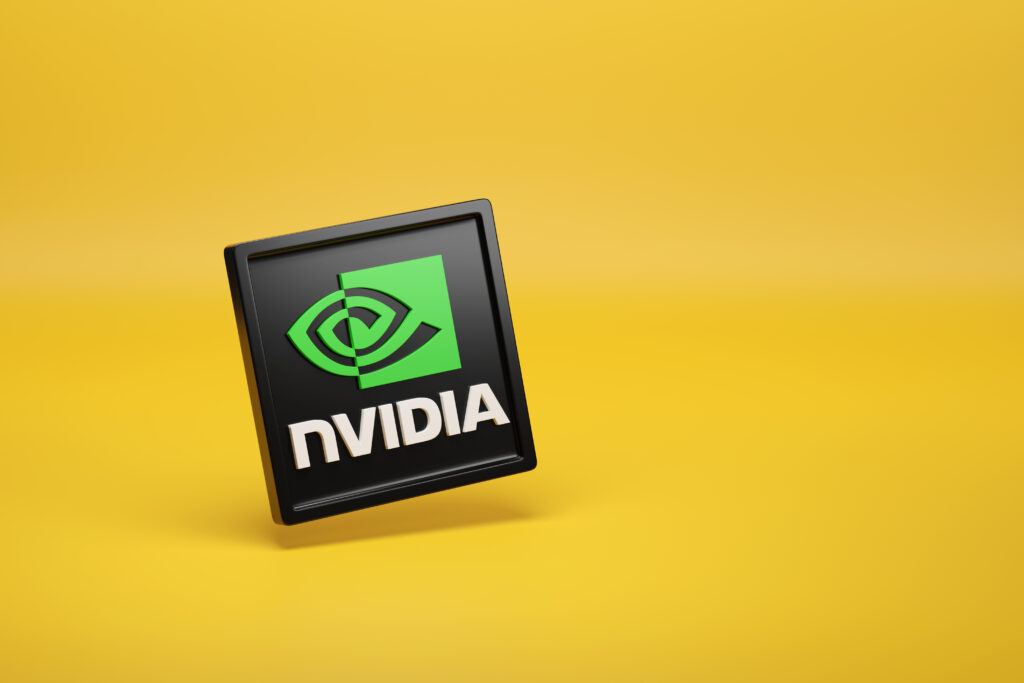As a technologist interested in AI and machine learning, one must follow the latest developments from industry leaders like NVIDIA closely. Their recent announcement of PaxML, a new framework built on Google’s JAX designed to optimize AI model training in data centers, will surely pique your interest. With the promise of unlocking significant improvements in performance and efficiency, PaxML aims to push the boundaries of what’s possible with model training workloads. Understanding the capabilities this new offering brings could prove invaluable as we maximize productivity and cost-effectiveness. Pay close attention as more details emerge – PaxML may well shape the future of scaled-out training and inference.
Introducing NVIDIA’s PaxML: A New Framework Built on Google’s JAX
An Optimized AI Training Framework Nvidia has announced PaxML, an AI model optimization framework built on Google’s machine learning framework JAX. PaxML allows data scientists and researchers to significantly improve the performance and efficiency of AI model training in data centers.
Scalable and High-Performance
- PaxML provides a scalable and high-performance platform for model training by optimizing JAX for NVIDIA GPUs and NVIDIA networking. This optimized combination delivers major performance gains in model training for both single-node and distributed training use cases.
Key Benefits
The key benefits of PaxML include:
- Accelerated model training: PaxML optimizes JAX to fully utilize NVIDIA GPUs and networking, providing up to 3x faster training speeds compared to JAX alone.
- Scalability: PaxML’s optimizations allow you to efficiently scale out to multiple GPUs and nodes, supporting models with billions of parameters.
- Compatibility: PaxML is compatible with JAX, so models and code written for JAX will work seamlessly with PaxML. This allows data scientists to get performance benefits without changing their models or workflow.
- Efficiency: In addition to performance gains, PaxML’s optimizations provide increased efficiency, using fewer resources to train models compared to JAX alone. This can significantly lower the cost of model training, especially at scale.
- Latest NVIDIA technology support: PaxML supports the latest NVIDIA GPUs, networking, and software for accelerated AI and data science workloads. This includes Tensor Cores, NVLink, NGC, and more.
- Open source: PaxML is open source and freely available for anyone to use. The code is available on GitHub under an Apache 2.0 license.
PaxML allows researchers and data scientists to train AI models faster and at a lower cost using NVIDIA infrastructure. With PaxML, model training can achieve new levels of performance, scale, and efficiency.
How PaxML Optimizes AI Model Training

Improved Performance
- PaxML provides significant performance improvements for AI model training in data centers. It optimizes how models are trained by improving the scaling efficiency of distributed training and reducing the time required for model convergence. PaxML enables models to train up to 3x faster than with standard distributed training techniques.
Efficient Scaling
- PaxML is built to take full advantage of the massive parallelism offered by GPUs and multi-GPU servers in data centers. It scales model training in a more sample-efficient manner, allowing models to effectively use more GPUs to speed up training. PaxML also reduces communication overhead between GPUs, streamlining how gradients are synchronized during training. These optimizations allow models to scale efficiently to hundreds of GPUs.
Rapid Model Convergence
- PaxML uses advanced optimization techniques like layer-wise adaptive rate scaling to speed up model convergence. It automatically tunes the learning rate for each layer of the network to reach optimal values more quickly. PaxML also applies gradient clipping, a method that rescales gradients to prevent their values from becoming too large during training, which can slow down convergence. These techniques enable models to converge in fewer iterations, reducing overall training time.
Flexibility
- NVIDIA built PaxML to be flexible and compatible with the most popular deep learning frameworks like TensorFlow, PyTorch, and MXNet. Data scientists and researchers can easily integrate PaxML into their existing workflows to improve the performance and scaling efficiency of model training on NVIDIA GPU platforms with no code changes required. PaxML puts the power of optimized, accelerated AI model training into the hands of developers.
Key Benefits of Using PaxML for ML Workloads
PaxML offers several advantages for AI and ML engineers working with large datasets and complex models. The framework is designed to streamline development and optimize resource utilization, accelerating time to solution.
Improved Performance
- PaxML leverages optimizations in JAX to provide faster training times. The framework compiles ML models using XLA, Google’s optimizing compiler. XLA applies optimizations like fusion, inlining, and constant folding to maximize hardware utilization. This results in performance gains of up to 5x compared to standard Python training.
Efficient Scaling
- PaxML makes it easy to scale ML workloads across multiple GPUs and servers. The framework integrates with distributed training libraries like MPI and NCCL to enable synchronous distributed training of models. Engineers can scale their workloads to hundreds of GPUs with minimal code changes. PaxML also supports mixed precision training, using 16-bit floats to improve memory efficiency.
Simplified Development
- PaxML provides a high-level API for defining and training ML models. Engineers can implement models in standard Python, and then compile them for optimized execution using the PaxML API. This simplifies the development process compared to lower-level alternatives. PaxML also integrates with visualization tools like TensorBoard to enable monitoring of metrics like loss, accuracy, and runtime during training.
In summary, PaxML is an optimized framework for developing and executing ML workloads at scale. By leveraging the performance and efficiency benefits of the framework, data scientists and ML engineers can accelerate time to solutions for their AI projects. With a simplified API and compatibility with existing ML tools, PaxML aims to make the process of building and optimizing models more accessible.
Technical Details on PaxML Implementation
PaxML relies on a technique called model parallelism to divide AI models across multiple GPUs during training. This allows PaxML to optimize performance and scale to handle increasingly complex models with billions of parameters.
Model Parallelism
- PaxML implements model parallelism by splitting a single model across multiple GPUs, with each GPU responsible for updating a partition of the model during training. This contrasts with data parallelism, where entire copies of the model are replicated across GPUs, each operating on a partition of the training data.
Optimizer
- PaxML uses a modified version of the LAMB optimizer, adapted for model parallel training. The optimizer handles synchronizing gradient updates across GPUs after each training step. It also implements several performance optimizations like gradient accumulation and preconditioning.
Data Sharding
- To facilitate model parallel training, the training data must be shared across GPUs so that each GPU has the data required for its portion of the model. PaxML provides APIs to share data in a model-specific fashion. For example, in a transformer model, the data would be shared by attention heads.
Communication-Efficient Training
A major challenge with model parallelism is the communication overhead from synchronizing model updates across GPUs. PaxML minimizes communication using several techniques:
Accumulating gradients over multiple steps before synchronizing.
Performing asynchronous communication of gradient updates in the background.
Using high-performance interconnects like NVIDIA NVLink to communicate between GPUs.
Applying gradient compression to reduce the amount of data transferred.
Fault Tolerance
- PaxML provides fault tolerance for model parallel training by regularly checkpointing the model and optimizer states. If a GPU fails during training, a new GPU can resume from the last checkpoint with minimal loss of work. PaxML also implements algorithms to rebalance the model across remaining GPUs in the event of a failure.
In summary, PaxML provides a framework for model parallel training highly optimized for performance, scale, and efficiency using multiple techniques tailored for distributed AI training. By overcoming the challenges of model parallelism, PaxML enables the training of larger and more sophisticated models than previously possible.
The Future of AI Training: How PaxML Fits In
Scalable Training As AI models become more complex, the computational resources required to train them are growing exponentially. PaxML is designed to optimize training across thousands of GPUs and nodes, enabling models with billions of parameters to be trained in days rather than weeks or months. The framework’s distributed architecture and performance optimizations allow for highly scalable distributed training.
Efficient Scaling
- While scaling up training to massive clusters is important for advancing AI, it also introduces inefficiencies like communication overhead between nodes. PaxML mitigates these inefficiencies through optimizations like gradient compression, pipelining, and asynchronous updates. These techniques improve scaling efficiency, allowing the framework to achieve near-linear scaling to thousands of GPUs.
Compatibility and Extensibility
- PaxML is built on JAX, Google’s library for high-performance machine learning research, so models written in JAX can easily be trained with PaxML. The framework is also designed to be extensible, with an API that allows researchers to build custom training loops, optimizers, data loaders, and other components. This extensibility will enable PaxML to support a wide range of models, objectives, and data types.
The Bigger Picture
- Frameworks like PaxML that can efficiently scale AI training to massive computational resources are crucial for continued progress in AI. As models become larger and more complex, scalable and optimized training infrastructures are necessary to achieve state-of-the-art results in areas like computer vision, natural language processing, and reinforcement learning. PaxML represents an important step toward fulfilling the promise of AI to solve complex, real-world problems. With scalable, optimized training, researchers will be equipped to build the complex, data-hungry models that will drive the next wave of progress in AI.
In summary, PaxML introduces optimizations and scalability to power the next generation of AI models and progress. The future of AI will depend on efficient, scalable training frameworks to achieve human-level intelligence.
In A Nutshell
You now understand the potential impact of NVIDIA’s new PaxML framework for optimizing AI model training. By leveraging JAX and new techniques like Megatron-Turing NLG 530B, PaxML aims to push the limits of model scaling and training efficiency in data centers. With up to 9x higher performance than current systems, PaxML could accelerate development cycles and time-to-accuracy for enterprises developing large language, vision, and recommendation models. As AI workloads continue growing exponentially, solutions like PaxML will be critical for maintaining rapid innovation. By following NVIDIA’s progress with PaxML and considering how it could improve your model training infrastructure, you position your organization to remain competitive in leveraging AI.
More Stories
Microsoft Unveils Windows 365 Link : A Compact Gateway to Cloud Computing
Microsoft’s latest innovation, the Windows 365 Link, emerges as a game-changing solution for your business. This compact, fanless mini PC represents a significant leap forward in cloud connectivity, offering you a streamlined gateway to Windows 365 Cloud PCs
Australia Moves to Set 16 as the Minimum Age for Social Media
As you navigate the ever-evolving landscape of digital communication, a significant shift is on the horizon in Australia. The nation's...
Google’s AI-Enhanced Chrome: A New Era of Automated Web Navigation
Google's latest innovations in Chrome are set to revolutionize the browsing experience. The tech giant is introducing AI-enhanced features that...
Qualcomm Signals Smartphone Revival with China’s High-End Demand Surge and AI-Driven Upgrades
Qualcomm's recent predictions offer a compelling narrative of revival in the smartphone industry. The company's projections, surpassing Wall Street expectations,...
Malaysia’s Data Center Boom: Job Growth Meets Rising Concerns Over Power and Water Scarcity
Johor’s data center boom exemplifies the delicate balance between economic advancement and environmental stewardship.
Telstra’s IoT State of the Nation 2024: Shaping a Data-Driven, Climate-Ready Australia Through IoT Innovation
As we await Telstra’s IoT State of the Nation 2024 event, let’s observe Australia’s digital transformation. This pivotal gathering on November 14 in Sydney promises to unveil groundbreaking insights into the Internet of Things (IoT) landscape.



